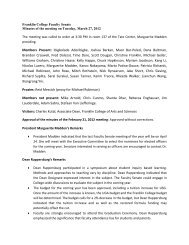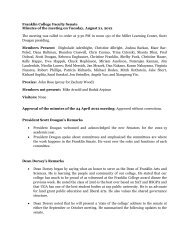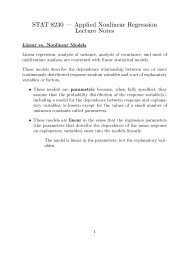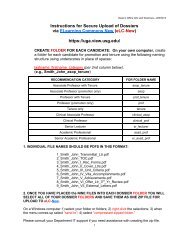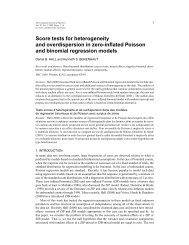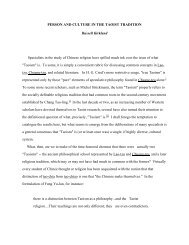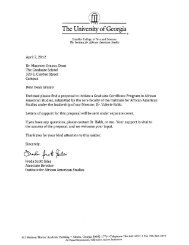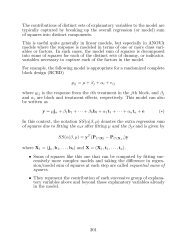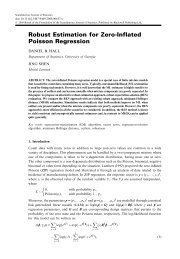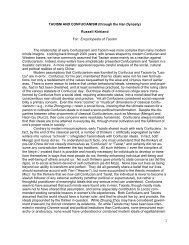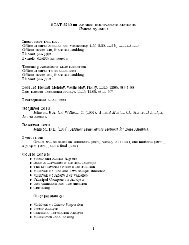Two-component mixtures of generalized linear mixed effects models ...
Two-component mixtures of generalized linear mixed effects models ...
Two-component mixtures of generalized linear mixed effects models ...
You also want an ePaper? Increase the reach of your titles
YUMPU automatically turns print PDFs into web optimized ePapers that Google loves.
30 DB Hall and L Wang<br />
Figure 1 Measles data. Years are grouped together for each county 1985–1991<br />
In addition, log (n ij ) represents an <strong>of</strong>fset corresponding to the natural logarithm <strong>of</strong> the<br />
number <strong>of</strong> children in the ith county during the jth year.<br />
Table 1 lists eight <strong>models</strong> <strong>of</strong> this general form and the corresponding values <strong>of</strong> 2times<br />
the maximized loglikelihood ( 2‘) and the Akaike information criterion (AIC). All <strong>of</strong><br />
the <strong>models</strong> in Table 1 except <strong>models</strong> 2 and 8 were fit with ML. Of these, model 1 is<br />
a (nonmixture) GLMM, model 3 is a mixture model without random <strong>effects</strong> and<br />
<strong>models</strong> 4–6 are two <strong>component</strong> GLMMs with identical fixed <strong>effects</strong>, but different<br />
assumptions regarding the random <strong>effects</strong> structure. Among these <strong>models</strong>, it is clear<br />
that <strong>models</strong> 1 and 3 fit much worse than the rest, suggesting that a two <strong>component</strong><br />
structure and county specific random <strong>effects</strong> are necessary here. Models 5 and 6 have very<br />
similarvalues<strong>of</strong> 2‘, with AIC preferring the more parsimonious model 6. To investigate<br />
whether the mixing probability varied with immunization rate, we refit model 6 with<br />
immunization rate included as a covariate in the <strong>linear</strong> predictor for logit(p ij ). A<br />
comparison <strong>of</strong> this model, listed as model 7 in Table 1, with model 6 via either a likelihood<br />
ratio test or a AIC suggests that g 1 ¼ 0. Thus, among the <strong>models</strong> fit with ML, we prefer<br />
model 6 for these data.<br />
To illustrate the NPML approach, we refit model 6 dropping the assumption <strong>of</strong><br />
normality on the random <strong>effects</strong>. This model is listed as model 8 in Table 1. For model<br />
8, we followed the strategy described by Friedl and Kauermann (2000) and started the<br />
fitting procedure from a large value <strong>of</strong> m (m ¼ 12), and then reduced m systematically



